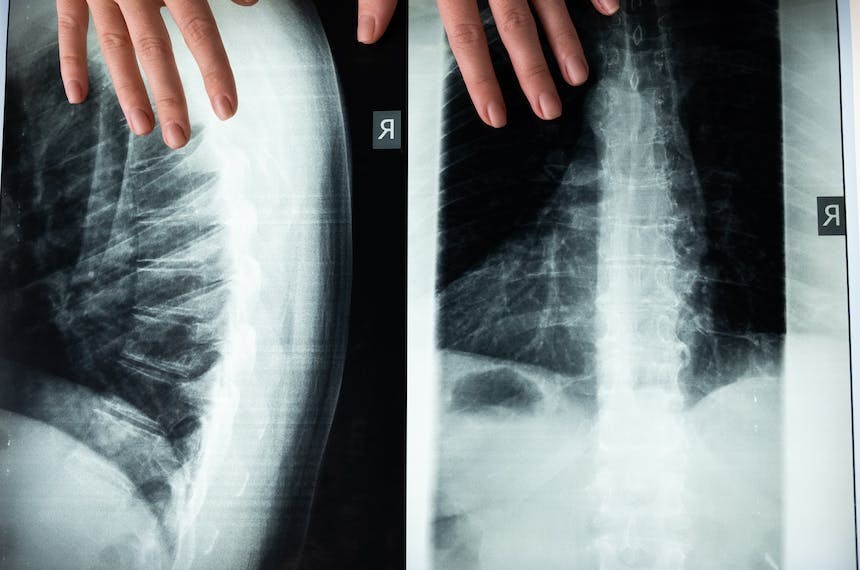
CNS Lymphoma
Primary central nervous system lymphoma (PCNSL) is a rare type of brain lymphoma. Diagnosis involves biopsy, and treatment includes high-dose methotrexate with rituximab. Surgery is mainly for diagnosis, and clinical trials are encouraged. Consolidation therapy may involve high-dose chemotherapy or radiation. Relapse can be treated with various options.
Primary Central Nervous System Lymphoma Overview
Primary central nervous system lymphoma (PCNSL) is an extranodal type of non-Hodgkin lymphoma (NHL) that involves the brain, leptomeninges, or spinal cord without evidence of systemic disease. The most risk factor for the development of PCNSL is immunodeficiency including HIV infection, Wiskott-Aldrich syndrome, and severe combined immunodeficiencies. Stereotactic needle biopsy of involved tissue is the diagnostic procedure of choice for PCNSL. Corticosteroids use prior to biopsy should be avoided. (1, 2, 3)
Treatment of PCNSL
PCNSL tends to have high sensitivity to both radiation and selected chemotherapeutic agents. Surgery is mainly for diagnosis. Patients with PCNSL should be encouraged to participate in clinical trials, when available. Aside from the importance of high-dose systemic methotrexate (MTX), there is little consensus on the optimal components of induction and consolidation regimens for PCNSL. (4)
Induction Chemotherapy
The goal of induction chemotherapy is to achieve a radiological complete response (CR). High-dose MTX (8 g/m2 administered on day 1 every 3 weeks for a total of 4 cycles) can generally be given with rituximab (anti-CD20 monoclonal antibody) (375mg/m2 administered on day 2 every 3 weeks for a total of 4 cycles). Patients with severe renal insufficiency (creatinine clearance <30 mL/minute) are not good candidates for MTX. Alternative induction strategies include high-dose cytarabine (2,000 mg/m2 every 12 hours for 2 days (total of 4 doses) every 3 weeks), or radiation. WBRT is generally avoided in older patients, except as a palliative option, due to high risk of delayed neurotoxicity. An alternative short induction regimen (two 21-day cycles of rituximab, high-dose MTX [3.5 g/m2], and cytarabine [2 g/m2 twice a day for two days]) is suggested in older patients. Also, an alternative dose of MTX of 3.5 g/m2, followed by WBRT could be used in elderly patients with poor performance status. (5, 6)
Monitoring and Dose Adjustments for Induction Agents
Patients on MTX should be admitted to the hospital and monitored for CBC, creatinine, MTX level starting after 24 hours of finish of treatment and liver function tests, daily. Leucovorin (25 mg every 6 hours) and alkalinisation of urine are essential. MTX dose is adjusted by creatinine clearance. Patients on cytarabine should be assessed daily for cerebellar syndrome signs. Also, clinicians must be aware that rituximab therapy imposes a risk of hepatitis B reactivation and could lead to progressive multiforcal leucoencephalopathy (PML). (7)
Response to Treatment and Consolidation Therapy
Patients should be evaluated no more than two months after the completion of planned therapy to determine their response to treatment. Consolidation therapy includes either high-dose chemotherapy (thiotepa/cyclophosphamide-conditioned regimen) with autologous hematopoietic cell transplantation (HCT) rescue, or whole brain radiation (45 Gy in 1.5 Gy fractions). Supportive care for increased intracranial pressure, glucocorticoids (dexamethasone 4-8 mg twice daily) are helpful. (9, 10)
Relapse Detection and Treatment
Following the completion of therapy, restaging, and documentation of complete remission, patients are seen at periodic intervals to monitor for treatment complications and assess for possible relapse. Patients who develop relapses are treated with cranial irradiation which is reserved for nonresponders to MTX or retreatment with MTX (3- 8 g/m2) or MTX-based combination chemotherapy if there has been a prior complete remission with this agent. Alternative chemotherapy regimens include high-dose cytarabine, high-dose chemotherapy followed by autologous HCT. (11)
References
1- Hoang-Xuan K, Bessell E, Bromberg J, et al. Diagnosis and treatment of primary CNS lymphoma in immunocompetent patients: guidelines from the European Association for Neuro-Oncology. Lancet Oncol. 2015;16:e322– e332.
2-Louis DN, Perry A, Reifenberger G, et al. The 2016 world health organization classification of tumors of the central nervous system: a summary. Acta Neuropathol. 2016;131:803–820.
3- Deckert M, Brunn A, Montesinos-Rongen M, Terreni MR, Ponzoni M. Primary lymphoma of the central nervous system—a diagnostic challenge. Hematol Oncol. 2014;32:57–67.
4- Rock JP, Cher L, Hochberg FH, et al. Primary CNS lymphoma. In: Neurological surgery, 4th ed, Yomans JR (Ed), WB Saunders, Philadelphia 1996. p.2688.
5-Abrey LE, Yahalom J, DeAngelis LM. Treatment for primary CNS lymphoma: the next step. J Clin Oncol 2000; 18:3144.
6-Kasenda B, Ferreri AJ, Marturano E, et al. First-line treatment and outcome of elderly patients with primary central nervous system lymphoma (PCNSL)—a systematic review and individual patient data meta-analysis. Ann Oncol. 2015;7:1305–1313
7-Rubenstein JL, Hsi ED, Johnson JL, et al. Intensive chemotherapy and immunotherapy in patients with newly diagnosed primary CNS lymphoma: CALGB 50202 (Alliance 50202). J Clin Oncol 2013; 31:3061.
8-Thiel E, Korfel A, Martus P, et al. High-dose methotrexate with or without whole brain radiotherapy for primary CNS lymphoma (G-PCNSL-SG-1): a phase 3, randomised, non-inferiority trial. Lancet Oncol 2010; 11:1036.
9-Morris PG, Correa DD, Yahalom J, et al. Rituximab, methotrexate, procarbazine, and vincristine followed by consolidation reduced-dose whole-brain radiotherapy and cytarabine in newly diagnosed primary CNS lymphoma: final results and long-term outcome. J Clin Oncol. 2013;31:3971–3979.
10-Pirotte B, Levivier M, Goldman S, Brucher JM, Brotchi J, Hildebrand J. Glucocorticoid-induced long-term remission in primary cerebral lymphoma: case report and review of the literature. J Neurooncol. 1997;32:63–69.
11-Hels H, Juergens A, Glasmacher A, et al. Early relapses in primary CNS lymphoma after response to polychemotherapy without intraventricular treatment: results of a phase II study. J Neurooncol. 2009;91:299–305.





